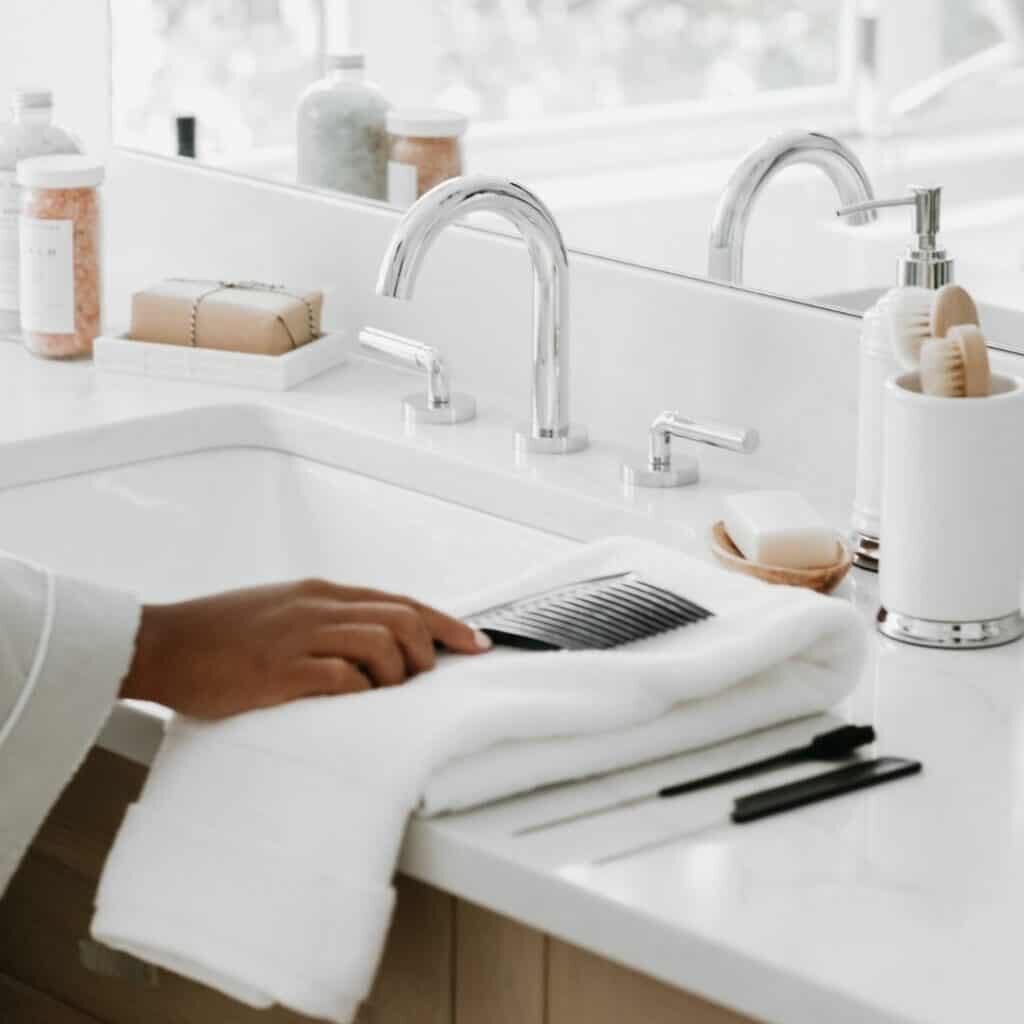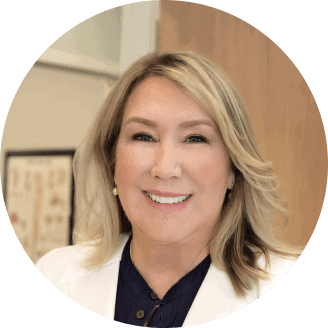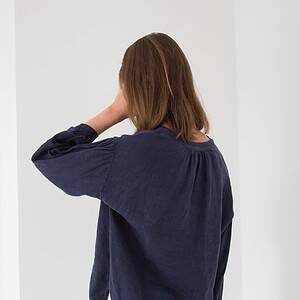
Perimenopause and Hair Loss: Physician Approved Remedies To Try
Most women expect at least some changes with menopause, like hot flashes. But many women aren’t aware that sometimes, perimenopause and hair loss go hand in hand.
We are emotionally connected to our hair. For most of us, our hair is an expression of our personality, style, and even our day-to-day vibe. Our hair is part of our self-image and is intrinsically linked to our self-esteem, more so than clothing or other public-facing aspects of ourselves. Who can’t relate to feeling a little extra pep on a good hair day or wanting to wear a hat after a bad haircut?
In this blog, we will talk about perimenopause hair loss and thinning, and how to keep your mane healthy and happy.
Perimenopause And Hair Loss – What Causes It?
Hair thinning during menopause is the result of decreased production of estrogen and progesterone. These hormones help hair grow faster and stay on the head for more extended periods. When these hormone levels drop, hair grows more slowly and the new hair is thinner. It also becomes drier and more brittle because the oil glands produce less oil. And, all the processing we do to our hair – blow-drying, straightening, and coloring – can make things worse.
Some women will experience female pattern hair loss (FPHL), which is more profound hair loss, mainly at the head’s front and crown, with more obvious shedding. FPHL is thought to be hereditary, but recent studies suggest that FPHL may also be associated with metabolic syndrome and diabetes. FPHL can occur at any age, but it most commonly occurs following menopause.
Menopause hair loss is different from FPHL, but the two conditions often coexist. Hormones alone are not to blame for all hair loss. Other causes include genetics, certain medications, stress, dieting with rapid weight loss, and illnesses like thyroid disease.
Perimenopause and Hair Loss – Remedies And Treatment Options
Therapies are available for both menopause-related and female-pattern hair loss; however, they aren’t cures—they can only help restore some of the hair you’ve lost.
Be gentle and preserve your hair follicles with less shampooing, blow-drying and heat styling, minimal brushing, and fewer tight ponytails and buns.
Cosmetic Options
- Cut it. Style it. Long hairstyles can make thinning hair more noticeable.
- Try highlights or lowlights. Color can create the appearance of more depth and dimension in your hair.
- Root Concealer. These are matte powders or sprays you apply straight to areas where your scalp is exposed and it will make your hair look much fuller.
- Special shampoos and conditioners. Thickening shampoos and conditioners may improve hair appearance. Anti-dandruff shampoos and tea-tree oil-infused treatments can help but require patience. It usually takes up to nine months for noticeable changes to appear.
- Scalp massage. When you are washing your hair, massaging your head can stimulate blood flow to the scalp and hair follicles.
- Scalp Micropigmentation. This is a procedure similar to microblading, which has become popular for thinning eyebrows, except, instead of a tiny blade, this procedure uses an electric microneedle device to embed tiny dots of pigment into the scalp. It’s like a hair tattoo. It works for all skin tones and hair colors, even gray. It typically requires two to four sessions. It’s considered a permanent treatment, but the results can fade after a few years.
Over the Counter
- Minoxidil (Rogaine) is the only FDA-approved topical treatment for FPHL. Minoxidil can take several months to take effect and must be used on an ongoing basis to maintain hair growth. It is safe but can have unpleasant side effects. The new hair can differ in color and texture from surrounding hair. And there is a risk of excessive hair growth in the wrong places, such as the cheeks or forehead. (This problem is more likely with the stronger 5% solution.)
- Biotin. Some dermatologists recommend trying oral biotin for hair loss despite a lack of studies showing its benefit because it is safe, and it seems to work for some. It also makes nails thicker. Biotin is also present in many foods, including eggs, fish, meat, seeds, nuts, sweet potatoes, broccoli and cauliflower.
- Iron supplements. Iron deficiency can be a cause of hair loss in some women. If blood tests show you have iron deficiency, you will need to take a supplement and it may stop your hair loss. However, if your iron level is average, taking extra iron will only cause side effects, such as stomach upset and constipation.
Prescription Medications
- Hormone Replacement Therapy is not recommended to use hormone replacement therapy just to treat hair loss even though some perimenopausal and menopausal women undergoing hormone replacement therapy for moderate to severe symptoms may notice an improvement in hair growth during treatment.
- Antiandrogens. (Spironolactone, Finasteride) Antiandrogen drugs are prescribed for both female pattern hair loss and excess hair on the face and body. These drugs are usually given in conjunction with a topical treatment like minoxidil.
Procedures
- Platelet-rich Plasma (PRP). PRP is a non-surgical treatment for hair loss. The evidence suggests that PRP may work best when combined with other treatments such as topical minoxidil (Rogaine) or the anti-androgenic oral finasteride (Propecia).
- Red Light (LED) Treatment uses two wavelengths of light to renew the cells responsible for hair growth. The treatment is given via a wireless light cap that connects to a mobile app where you can track the treatments. Treatments take 10 minutes each day. In the US, the HairMax Lasercomb® low light laser is FDA approved to treat FPHL. Another FDA-approved laser product is the Theradome LH80 PRO® helmet and low-light laser helmets and caps. The results of laser therapy are inconsistent. It appears to work for some people but not for others. It is most often used after hair transplant to maintain results.
- Microneedling. Microneedling of the scalp can be performed, with and without the application of minoxidil. Microneedling works by stimulation of stem cells and inducing activation of growth factors.
- Hair Transplants. Women, like men, might improve their appearance with hair transplants. However, very few women have the type of hair loss that makes them good candidates. Most women have an overall thinning in all areas of the head, including the sides and back, which are the areas that act as donor sites in men. In females, these donor areas are usually unstable and, if transplanted, the hair will fall out.
Perimenopause And Hair Loss Final Thoughts
- Hair thinning and loss is very common in midlife and with menopause.
- Often good self-care and simple interventions are the best approaches to optimizing your crowning glory.
- There are cosmetic options for improving the appearance of hair and medical treatments which, when used long term, can improve hair growth.
- If you have other symptoms along with hair loss, seek your doctor’s advice because the sooner you start treatment, the better the results.

MEET DR. ELLEN
My mission is to bring you the most up-to-date, proven medical information, simplified, so you can make confident, educated decisions about your health.
I'M LOOKING FOR...
grab your 5 day
quick start guide



